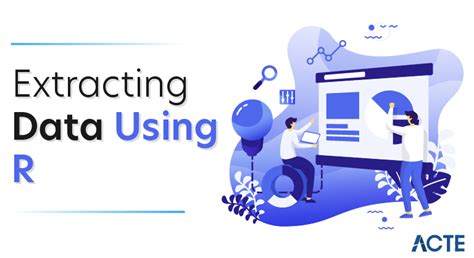

Extract Data from Website Using R: 2025’s Ultimate Guide
Introduction
Unlock valuable insights by extracting data from websites using the power of R programming. This guide will delve into the methods, techniques, and comparisons to empower you with the skills to harness website data effectively.

Methods for Data Extraction
1. Using the rvest Package
The rvest package is designed specifically for web scraping in R. It provides a user-friendly interface to parse HTML and extract data using CSS selectors or XPath expressions.
2. Using the httr Package
The httr package handles HTTP requests and responses, enabling you to interact with websites programmatically. You can use httr to fetch web pages and then parse the HTML using other tools.
3. Using the XML Package
If the website provides data in XML format, you can use the XML package to parse and extract the data.
Comparing Methods
| Method | Pros | Cons |
|---|---|---|
rvest |
Easy to use, well-documented | May not handle complex websites |
httr |
More flexible, allows for custom requests | Requires more coding |
XML |
Efficient for XML data | Not suitable for HTML data |
Benefits of Data Extraction
- Market Analysis: Extract competitor data, pricing information, and customer reviews to gain insights into market trends.
- Data Integration: Combine data from multiple websites to create a comprehensive dataset for analysis.
- Content Analysis: Extract text, images, and other content from websites to perform sentiment analysis, topic modeling, or keyword research.
- Social Media Monitoring: Collect data from social media platforms to track brand sentiment, analyze customer engagement, and identify influencers.
Case Study: Extracting E-commerce Product Data
Consider a case where you need to extract product data from an e-commerce website. Using the rvest package, you can write code like the following:
library(rvest)
url <- "https://example.com/products/electronics"
html <- read_html(url)
product_names <- html %>%
html_nodes(".product-name") %>%
html_text()
This code would extract the product names from the website and store them in the product_names vector.
Future Trends in Data Extraction
- Artificial Intelligence (AI): AI-powered tools will automate the process of data extraction, making it faster and more efficient.
- Cloud Computing: Cloud-based platforms will provide scalable infrastructure for large-scale data extraction.
- Real-Time Data Extraction: Techniques will emerge to enable the extraction of data from websites in real time.
How to Improve Data Extraction Skills
- Practice regularly: Engage in hands-on projects to develop your skills.
- Stay updated: Keep abreast of the latest packages and techniques.
- Learn web development: Understanding HTML and CSS can enhance your extraction capabilities.
- Use debugging tools: Utilize R’s debugging tools to identify and resolve errors effectively.
FAQs
-
How do I extract data from websites that require authentication?
– Use theremotespackage to handle authentication. -
How can I extract data from websites that use JavaScript?
– Consider using theRSeleniumpackage to simulate browser interactions. -
What tools can I use to visualize my extracted data?
– Theggplot2andplotlypackages are excellent for data visualization. -
How can I ensure the accuracy of my extracted data?
– Validate the data by comparing it to other sources or manually checking a sample. -
What are some innovative applications of data extraction?
– Price Monitoring: Track prices on e-commerce websites to identify discounts and trends.
– Sentiment Analysis: Extract and analyze user reviews to assess customer sentiment towards products or services.
– Lead Generation: Identify potential leads from contact forms and business directories.
– Website Monitoring: Monitor website content for changes, errors, or updates.
Conclusion
Mastering the art of extracting data from websites using R empowers you with the ability to unlock valuable insights, inform decision-making, and drive innovation. By embracing the techniques and best practices outlined in this guide, you can harness the power of website data to achieve your business goals and stay ahead in a data-driven world.










